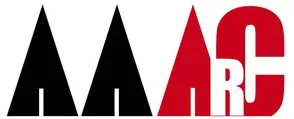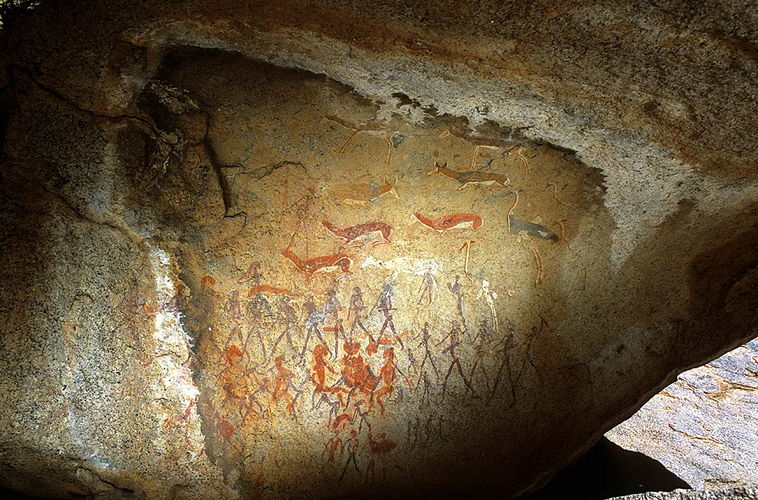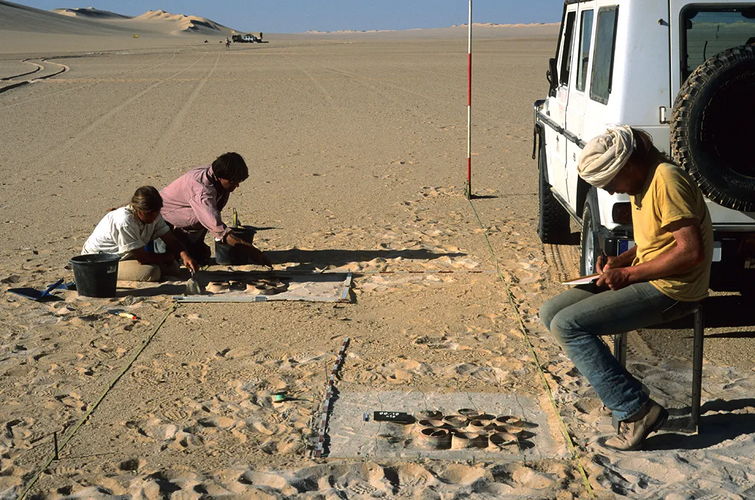Digitisation of archaeological excavation and rock art documentation from north-eastern and south-western Africa
For more than 60 years, the Institute of Prehistoric Archaeology at the University of Cologne has been conducting cultural and environmental history research in the desert regions of Africa. The Heinrich Barth Institute considers one of its main tasks to be the preservation and cataloguing of the data obtained in this way. As part of the project ‘User-oriented restructuring of the German Digital Library (DDB)’, photographic documentation from two long-term projects funded by the German Research Foundation (DFG) - ‘Rock paintings in the High Brandberg’ (Namibia) and ‘Regional climate development and human settlement between the Nile Valley and the Central Sahara (A1)/SFB 389: ACACIA’ (Egypt) - has now been digitised.
The records digitised in the project were simultaneously made accessible online via the ‘African Archaeology Archive Cologne’ (AAArC ).
As part of the Brandberg project, Harald Pager, who died in 1985, documented more than 43,000 individual rock art motifs from 840 sites in the Brandberg massif (Daureb in the language of the local Damara) between 1977 and 1985. Pager's main focus was on tracing all recognisable images on transparencies directly from the rock. In his photographic documentation of the rock art, he concentrated on clearly recognisable motifs and views of the sites (Brandberg-Daureb Pager Documentation ). True to the archaeological maxim that the circumstances of the find are as important as the find, each site was reproduced in a scale view and top view drawing. On the one hand, the extensive documentation enabled a strict systematisation of the sites and, derived from this, the modelling of a pattern of use of the landscape by the prehistoric painters, and on the other, the development of a textual approach (Lenssen-Erz: Gemeinschaft-Gleichheit-Mobilität. Köln 2001. ), which makes it possible to structure the images and store the pictorial motifs in a database in such a way that detailed action parameters can also be queried in the entire database (39,075 figures) (Brandberg-Daureb-Database ).
The research in Egypt was part of the Collaborative Research Centre 389 , a long-term project set up at the University of Cologne between 1995 and 2007, whose central theme is expressed in its acronym ‘ACACIA’ - Arid Climate, Adaptation, and Cultural Innovation in Africa: the reaction of humans to the challenges of the arid regions of Africa, to the specific requirements of an environment characterised by a strong variability of central ecological factors. The basic idea was that human societies constantly review and innovatively change their adaptation strategies to an environment that is unstable in many respects. The sub-project dealt with here focussed on the connections between climatic and landscape changes on the one hand and human settlement in the Egyptian part of the Eastern Sahara on the other, as well as their effects on developments up to the emergence of ancient Egyptian civilisation. The investigations made it possible to reconstruct the cultural and environmental history of the past 12,000 years, from the first human settlement after the end of the last Ice Age to the Pharaonic utilisation of today's desert areas.
Although the main results of both projects have been published - including in six double-volume monographs on the rock art of the Brandberg and in numerous monographs on the prehistory and early history of north-east Africa - much of the primary data has so far only been stored in analogue form in the Cologne Institute's archive. These include, above all, colour slides from the rock art documentation in Namibia and the archaeological excavations in Egypt. Despite good storage, these lose their colour fidelity over time, which means a significant loss of information for both rock art photographs and archaeological documentation. While the photographs of the rock art documentation from the southern Brandberg have already been digitised with funding from the DFG and made accessible via AAArC, in this project the 35mm slides from the little-researched northern part of the Brandberg and all the colour slides from the ACACIA Collaborative Research Centre project carried out in Egypt were made digitally available.
In total, more than 20,000 objects have been digitised and provided with contextual information. The digitisation of the documentation of the research projects not only enables permanent and loss-free archiving, but above all provides the scientific community, especially colleagues and students in the African partner countries, with extensive and open access to the primary data and also conveys a vivid impression of the research work in thousands of photographs.
Funding
The HBI took over the planning and implementation of the project and also subsidised the digitisation work. The majority of the digitisation work was financed by funds from the NEUSTART KULTUR rescue and future programme of the Federal Government Commissioner for Culture and the Media (BKM).



